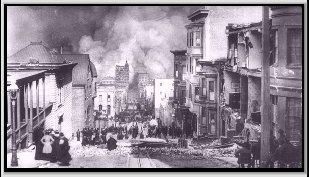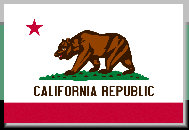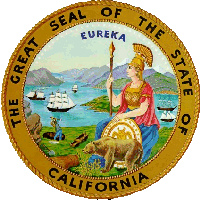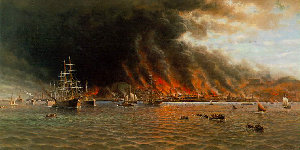The Great Earthquake
This website was created and is maintained by:
Philip J. June
Tucson, AZ
This website was first created
and published on 12.02.07;
Last update was 12.02.07
The Golden Gate Bridge Under Construction
The San Francisco Earthquake
and Fire - 1906
California
The
Golden State
History of
Evacuation of San Francisco
The 20th Century
The 20th Century was a period marked by phenomenal growth, engineering achievements, and social progress.
The prosperity decades
also witnessed the blossoming of California's love affair with the car. Automobiles became an integral part of the much-admired "California
life style."
The San Francisco-Oakland Bay Bridge opened for traffic on November 12, 1936, six months before San Francisco's
other famous bridge, the
Golden Gate Bridge. The Golden Gate Bridge had the longest suspension span in the world when it was
completed in 1937.
After a brief flirtation with filmmaking in northern California, the fledgling industry relocated to the Hollywood
area. The Los Angeles suburb of Hollywood offered a superior climate, a greater variety of landscapes, and something northern
California simply couldn't match--easy access to the Mexican border across which worried filmmakers could flee (if ever necessary)
to escape Thomas Edison's patent attorneys from New Jersey.
Spanish missionaries introduced the first oranges to California
during the late eighteenth century, but it wasn't until a century later that citrus fruits became an important part of the state's
economy. California farmers in 1876 began growing summer-ripening Valencia oranges. Southern California was soon producing two-thirds
of the nation's oranges and more than 90 percent of its lemons.
At almost precisely 5:12 a.m. on April 18, 1906 , local time, an earthquake foreshock occurred with sufficient force to be felt
widely throughout the San Francisco Bay area. The great earthquake broke loose some 20 to 25 seconds later, with an epicenter near
San Francisco. Violent shocks punctuated the strong shaking which lasted some 45 to 60 seconds. The earthquake was felt from southern
Oregon to south of Los Angeles and inland as far as central Nevada.
The quake lasted only a minute but caused the worst
natural disaster in the nation's history. Modern analysis estimates it registered 8.25 on the Richter scale. The greatest destruction
came from the fires the quake ignited. The fires lasted for four days and nights. Some property owners set fire to their damaged
buildings because most insurance policies covered fire losses while prohibiting payment if the building had only sustained earthquake
damage.
Property losses from the disaster have been estimated to be more than $400 million. Reconstruction was swift, and
largely completed by
1915, in time for the Panama-Pacific Exposition which celebrated the reconstruction of the city and its "rise
from the ashes".
The
Los Angeles Olympics of 1932 was a spectacular success. Three years later, President Roosevelt officially dedicated Hoover Dam
on the Colorado River. Standing tall on nearby Telegraph Hill was a more modest construction, Coit Tower, decorated with murals
depicting scenes from the 1930s. The decade ending in grand style with the opening of the Golden Gate International Exposition on
Treasure Island in San Francisco Bay.
California Today
Although agriculture
is gradually yielding to industry as the core of the state's economy, California leads the nation in the production of fruits and
vegetables, including carrots, lettuce, onions, broccoli, tomatoes, strawberries, and almonds. The state's most valuable crops are
grapes, cotton, flowers, and oranges; dairy products, however, contribute the single largest share of farm income, and California
is again the national leader in this sector. The state also produces the major share of U.S. domestic wine.
California continues
to be a major U.S. center for motion picture, television film, and related entertainment industries, especially in
Hollywood and
Burbank.
Other major industries include aerospace, computer hardware and software, oil drilling, mining (especially borax), and trade
and tourism.



















